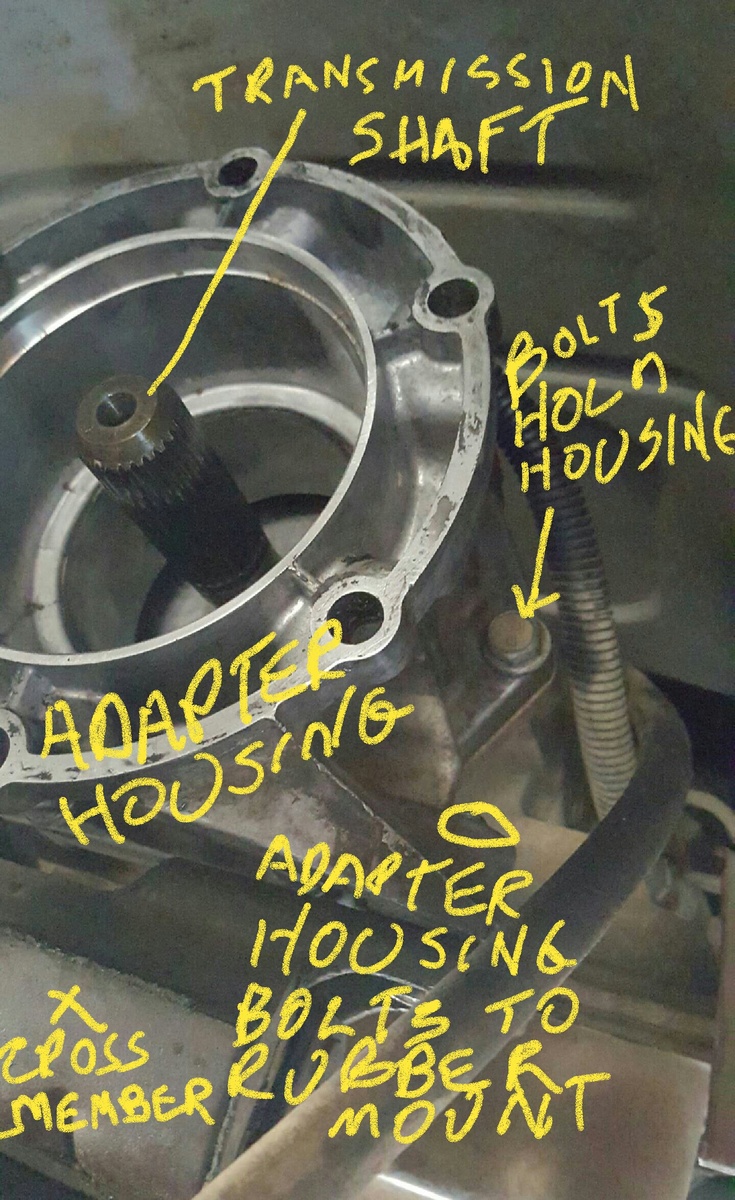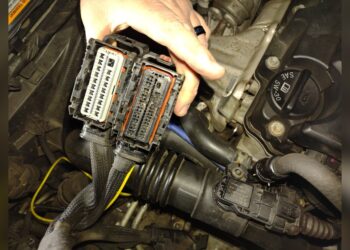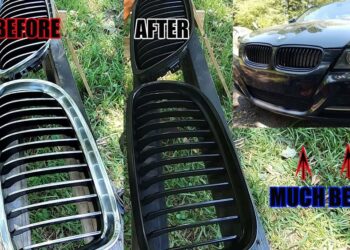A malfunctioning speedometer and unresponsive transmission often indicate a faulty vehicle speed sensor. This critical issue requires immediate attention to avoid potential safety hazards.
Understanding the common causes behind a speedometer failure and transmission issues is crucial for any vehicle owner. A speedometer that ceases to function correctly can lead to inaccurate speed readings, which not only jeopardizes your driving accuracy but may also result in legal consequences.
Similarly, a transmission that won’t shift disrupts the vehicle’s performance, making it challenging to drive or even rendering the vehicle immobile. These problems can stem from various factors, including electrical issues, a damaged speed sensor, or a failing transmission. Early diagnosis and repair are essential to maintain the vehicle’s health and ensure a safe driving experience. By addressing these concerns promptly, drivers can prevent further damage to their vehicles and ensure compliance with road safety regulations.

Credit: m.facebook.com
Introduction To Speedometer And Transmission Issues
A car’s speedometer and transmission play crucial roles. The speedometer displays your speed. The transmission ensures the right power goes to your wheels. When these fail, it spells trouble.
Common Symptoms
- Speedometer not moving or giving wrong readings.
- Gears not shifting smoothly or at all.
- Strange noises when trying to change gears.
- The check engine light may turn on.
Potential Impact On Driving Safety
Ignoring these signs puts you at risk. A faulty speedometer can lead to speeding unknowingly. A bad transmission might cause loss of control. Always address these issues promptly.
Basic Troubleshooting Steps
Dealing with a speedometer not working or transmission not shifting can be tricky. Yet, knowing the basic troubleshooting steps can guide us through the process. Let’s explore how to diagnose and fix these issues.
Initial Diagnostic Checks
Start by checking the most common areas that could cause these problems. This includes the vehicle’s fuses, wiring, and sensors. A simple check can sometimes solve the issue.
- Check the fuse box: Look for any blown fuses.
- Inspect wiring: Look for any damaged or disconnected wires.
- Test the speed sensor: Ensure it’s functioning properly.
Tools And Equipment Needed
Having the right tools is essential for effective troubleshooting. Gather these tools before starting your diagnostic checks.
| Tool | Use |
|---|---|
| Multimeter | To test electrical connections |
| OBD-II Scanner | For reading error codes from the car’s computer |
| Screwdrivers | For opening panels to access fuses and wiring |
Start with these basic steps to find and fix the problem. Remember, safety first. Always consult your vehicle’s manual and take precautions when working on your car.
Speedometer Failures
When your car’s speedometer stops working, it’s more than an inconvenience. It’s a sign of potential car health issues. Without accurate speed readings, safe driving is compromised. The problem could also indicate transmission trouble, as these systems can be interconnected.
Analog Vs. Digital Speedometer Problems
Analog speedometers use gears and cables to measure and display vehicle speed. Digital speedometers, on the other hand, rely on sensors and electronic data.
- Analog issues often stem from a broken cable.
- Digital faults can arise from sensor failures.
Identifying the type is key to understanding the problem.
Quick Fixes For Speedometer Malfunctions
Some speedometer problems have simple solutions. Let’s explore a few:
- Check the fuse box for any blown fuses.
- Inspect the speed sensor for damage or disconnection.
- Look at the dashboard for any error messages.
These steps can often restore speedometer function.
Transmission Shifting Problems
When your vehicle’s speedometer stops working, it might hint at transmission troubles. A well-functioning transmission ensures a smooth ride. Yet, issues can arise, disrupting the harmony between gears and engine speed. Let’s dive into how you can spot and address transmission shifting problems.
Identifying Shifting Irregularities
- Look for delays in gear engagement.
- Notice if the car jerks during shifts.
- Check for unusual noises when shifting.
- Monitor for higher RPMs without speed increase.
Gear shifts should be seamless and prompt. Any deviation can signal a problem. Early detection is key to prevent further damage.
Immediate Actions To Take
- Stop driving to avoid more harm.
- Check the transmission fluid level and color.
- Look beneath the car for leaks.
- Use an OBD-II scanner for error codes.
Acting fast can save your transmission from severe damage. Consult a professional mechanic for a thorough inspection. Regular maintenance keeps your car running smoothly. Remember, ignoring early signs can lead to costly repairs.
Electrical Connections And Sensors
Electrical Connections and Sensors play a key role in your car’s performance. These parts help your speedometer work right. They also help your car shift gears smoothly. If these parts have issues, your speedometer might stop working. Your car might not shift gears right too.
Checking The Vehicle Speed Sensor (vss)
The Vehicle Speed Sensor (VSS) tells your car how fast it’s going. A bad VSS can cause speedometer and transmission problems. Follow these steps to check the VSS:
- Find the VSS. It’s usually on the transmission.
- Check for damage. Look for cracks or loose connections.
- Test the VSS with a multimeter. Make sure it works right.
Inspecting Wiring And Electrical Components
Bad wires can cause big problems. Follow these steps to check the wires:
- Look for broken wires. They can stop signals.
- Check connectors. Make sure they are tight and clean.
- Use a multimeter. Test each wire for proper voltage.
Fixing these issues can make your speedometer and transmission work right again.
Fuses And Relays
When your speedometer fails and your transmission hesitates to shift, the issue could be as simple as a fuse or relay. These small components are crucial for sending the right electrical signals in your vehicle. Let’s dive into how to check and fix fuses and relays.
Locating And Testing Relevant Fuses
First, locate your fuse panel. You will find it in your vehicle’s manual. Once found, remove the fuse box cover. Look for the speedometer and transmission fuses. Your manual will have a chart for this.
Inspect each fuse connected to the speedometer and transmission. Look for a broken metal strip inside. If broken, replace it. Always match the new fuse’s amperage with the old one. Use a fuse puller or tweezers to remove fuses safely.
| Fuse Function | Visual Check | Action |
|---|---|---|
| Speedometer | Broken metal strip | Replace fuse |
| Transmission | Intact metal strip | Test further |
Relay Inspection And Replacement
Relays are switches that control high-power circuits using a low-power signal. Identify the relays for the speedometer and transmission in your manual. Check the relay diagram. It shows how to test them.
- Remove the relay with care.
- Check for signs of burning or damage.
- Use a multimeter to test the relay.
- If faulty, replace it with a new one.
Ensure the replacement relay matches the original. The same type and amperage are needed. After replacement, test your speedometer and transmission again.
Diy Repair Tips
DIY repair tips can save time and money. A malfunctioning speedometer and unresponsive transmission can be daunting. Yet, some issues have simple fixes. This guide provides steps to troubleshoot and repair common problems at home.
Step-by-step Guide To Common Fixes
Before starting repairs, gather tools like screwdrivers, a multimeter, and a vehicle manual. Safety first: work in a well-lit area and ensure the car is stable.
- Check the Fuse: Locate the fuse box using the manual. Find the speedometer and transmission fuse. Replace if blown.
- Inspect Speed Sensors: Find the speed sensors on the transmission. Clean any debris. Replace if damaged.
- Examine Wiring: Look for loose or corroded wires. Tighten connections and replace any damaged wires.
- Test the Instrument Cluster: Remove the cluster. Check for loose cables. Use a multimeter to test for continuity.
- Reset the ECU: Disconnect the battery for 30 minutes. This can reset the car’s computer systems.
When To Seek Professional Help
Some issues need expert diagnosis. Look for signs to decide when to call a mechanic.
- Complex Electrical Problems: If basic troubleshooting fails, the electrical system may need a pro.
- Persistent Warning Lights: Dashboard alerts that stay on suggest deeper issues.
- Transmission Behavior: If the car won’t shift after trying DIY fixes, the transmission might need an expert.

Credit: m.youtube.com
Preventative Maintenance
Preventative maintenance is key to a smooth ride. A well-maintained car keeps you safe and saves money. Neglect can lead to a non-working speedometer and a transmission that won’t shift. Let’s ensure your car stays in top shape with some simple steps.
Regular Inspection Routines
Regular checks prevent big issues. They keep your speedometer and transmission running well. Follow these steps:
- Check fluids: Ensure transmission fluid is clean and full.
- Inspect wires: Look for damaged wires under the dashboard.
- Test sensors: Make sure speed sensors are functioning.
Long-term Care For Transmission And Speedometer Health
Long-term care extends life and improves performance. Here’s what to do:
- Service regularly: Get professional checks and fluid changes.
- Drive smoothly: Avoid harsh accelerations and stops.
- Monitor symptoms: Watch for warning signs like slipping gears.
By following these tips, you reduce the risk of costly repairs. Your car stays reliable for years.
Legal And Safety Considerations
When it comes to driving, safety always comes first. A working speedometer and proper transmission are crucial. They help drivers obey speed limits and ensure smooth vehicle operation. Ignoring these issues may lead to legal troubles and jeopardize road safety.
Driving With A Malfunctioning Speedometer
A speedometer shows your driving speed. A broken one can cause serious problems. You might speed unknowingly. This puts everyone on the road at risk. Police can issue tickets for speeding, even if you didn’t know you were doing it. It’s essential to fix a broken speedometer quickly.
Responsibilities And Regulations
Vehicle owners must keep their cars in safe working condition. This includes a functioning speedometer. Laws vary by location. Yet, most places consider driving with a faulty speedometer illegal. Regular maintenance can prevent these issues. It’s part of being a responsible driver.
Transmission problems can also affect safety. A car that doesn’t shift correctly could stall or behave unpredictably. This might cause accidents. It’s vital to address these problems immediately.
Remember, your actions on the road affect others. Always maintain your vehicle and follow traffic laws. This ensures everyone’s safety.
Conclusion And Final Thoughts
Navigating through the maze of car troubles can be daunting. Speedometer issues and transmission problems are no small matters. They demand immediate action. Let’s wrap up our discussion with some final thoughts.
Recap Of Quick Fixes
- Check your car’s dashboard fuses first. They might be blown.
- Inspect the vehicle speed sensor. It could be faulty.
- Make sure the transmission fluid is at the right level. Also, it should be clean.
- Look at the wiring for any signs of damage or wear.
Importance Of Addressing Issues Promptly
Ignoring these signs can lead to bigger, costlier problems. Act fast to save money and keep your car running smoothly. Safe driving depends on a working speedometer and smooth-shifting transmission.
Regular check-ups are key. They help catch issues early. Stay proactive in your car’s maintenance. It ensures a longer life for your vehicle.

Credit: www.cargurus.com
Frequently Asked Questions
Why Is My Speedometer Not Working?
A malfunctioning speedometer can be due to a faulty speed sensor, broken cables, or issues within the instrument cluster itself.
Can Transmission Problems Affect The Speedometer?
Yes, since the transmission and speedometer are interconnected, issues like a bad vehicle speed sensor can impact both.
How Do I Fix My Transmission Not Shifting?
Addressing a transmission that won’t shift may involve checking the fluid levels, diagnosing electrical faults, or consulting a professional mechanic.
What Causes A Speedometer To Stop Working?
Common causes include a malfunctioning speed sensor, damaged wiring, or a faulty speedometer gauge.
Is It Safe To Drive With A Non-functioning Speedometer?
Driving without a working speedometer is not safe and can be illegal, as it’s essential for following speed limits and ensuring vehicle control.
Conclusion
Navigating issues with your speedometer and transmission can be daunting. Yet, understanding the root causes provides clarity and direction for repairs. Remember, timely intervention by professionals can save time and money, ensuring your vehicle remains reliable. Embrace these insights to keep your journey smooth and your car in prime condition.

















